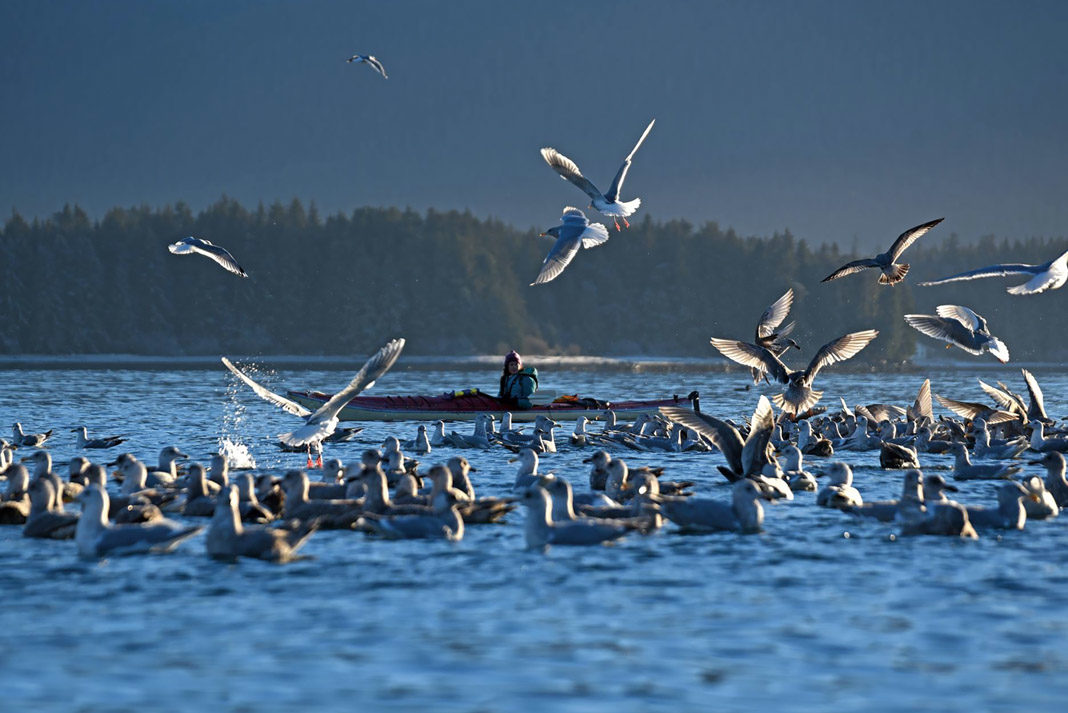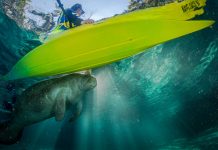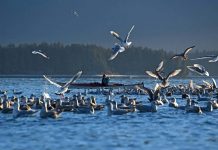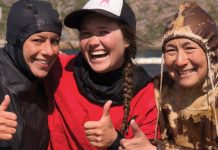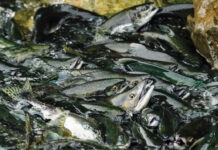My corridor is where cold, silty freshwater meets the salty, slender sea. My vessel is a kayak, and my direction is north.
As the ice of Alaska’s Glacier Bay National Park shrinks, new land is revealed and seawater habitat enlarges. New niches emerge, a diversity of organisms move in, and a beautiful fjord ecosystem is born. Like a living laboratory, it’s here biologists observe how life returns in the wake of retreating ice.
Like me, most of the migrants to this new land use the air or the sea as their migratory corridors.
Along the edge of the glacier’s ice, bullseye lichen circulates and spots the bare rock as the earliest colonizer. Its spores were passed here through the air, spread by wind and wing.
A dozen types of seabirds have flown here to feed from the glacier’s nutrients, now melting into the sea.
I set up camp on a small, hideaway beach, serenaded by a cacophony of oystercatchers’ shrieks and shrills.
Seagulls are hard to speciate, and even harder to appreciate, as they cackle and squeal and poop. A gaggle of unseen sea ducks rolls in a sea of purple. And three loons coo and croon a wilderness song reverberating through the valley, bouncing off lichen-laden granite, then dissipating toward the ocean, and into the night.
Just 150 years ago this beach campsite and bird-nesting island habitat was occupied by ice. Today it’s a world reborn, a lesson in resilience.
In the morning I pack up camp and fill the bulkhead of my sea kayak with a propane stove and bear cans.
I’m ready to continue my slow and steady migration north. The ocean is so still, the continuous sounds of birds smoothly slide atop the water, sound waves entering my eardrums, which vibrate in rhythym. The memory fixes in my mind.
When I depart, my paddle gently pulls the water. My own liquid corridor, moving toward glacier ice.
While I float atop it, other mammals swim this cold sea.
A moose’s brown ears are all that extend from the surface of the ocean as she makes her way to an island of cottonwood trees, then eventually back to mainland again. And a brown bear swimmer uses the water as its path throughout the islands of southeast Alaska on what I imagine is a hunt to find a mate.
The sky and sea are corridors to this young land where lichen spores propagate, cottonwood trees extend, oystercatchers nest, brown bears fish. We are all travelers here, temporary and ephemeral. I pull the nose of my kayak onto the sand, start a fire under a moon sliced in half, encircled by golden rose—the ring reaches toward the ocean and reflects a glittering ripple of light.
Theresa Soley is a guide, writer and journalist who lives in Juneau, Alaska.
GLACIER BAY NATIONAL PARK IS A HIGHLIGHT OF ALASKA’S INSIDE PASSAGE AND PART OF A 25-MILLION ACRE WORLD HERITAGE SITE—ONE OF THE WORLD’S LARGEST INTERNATIONAL PROTECTED AREAS.



